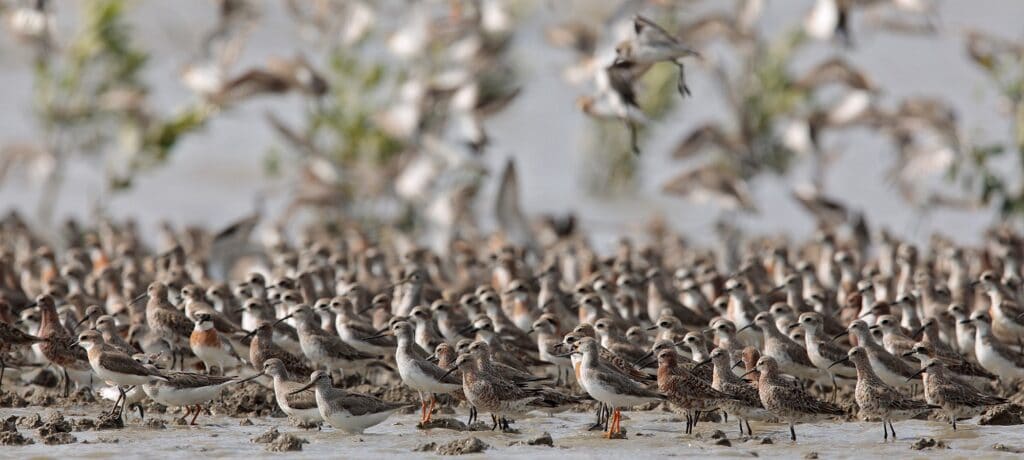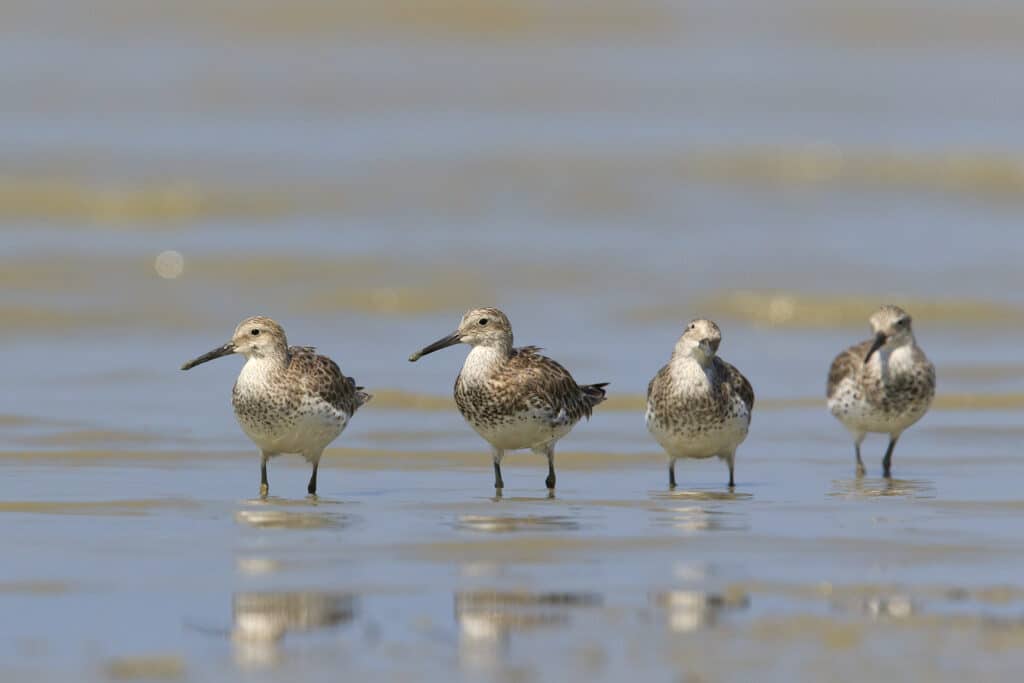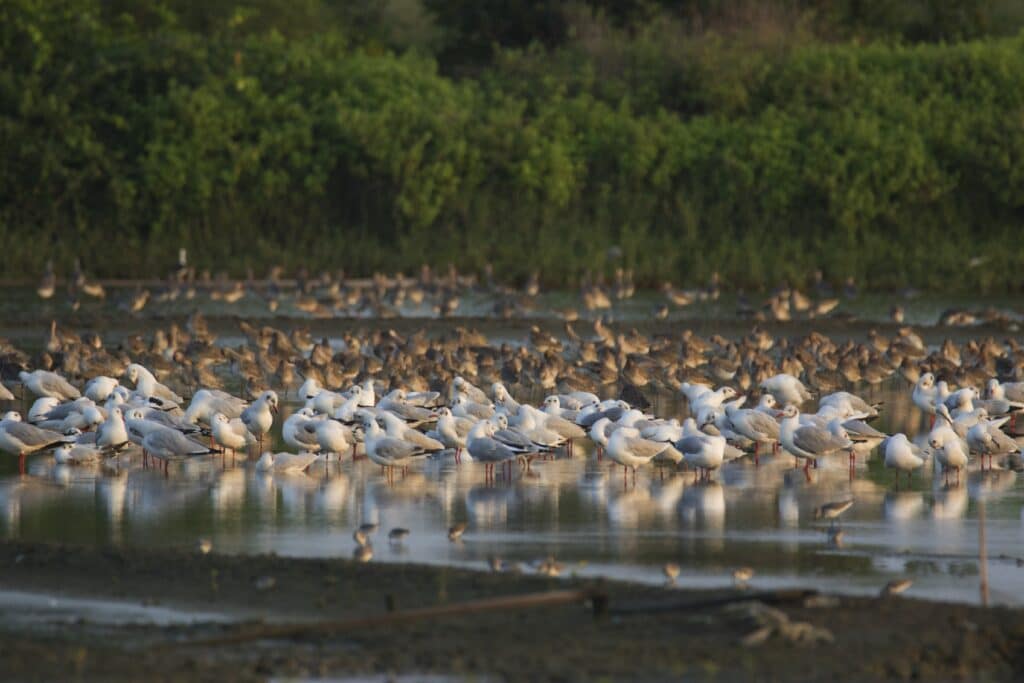The overlooked Southeast Asian wetlands in need of urgent action

Mudflats drained, mangroves cut down… unless we act fast, some of Southeast Asia’s most vital shorebird havens could soon be lost forever. A new BirdLife study sheds light on key sites that had fallen through the knowledge gaps.
Every year, over 200 species of waterbird take off from their breeding grounds across the tundra, marshes and frozen forests of northern Asia, bound to spend the winter in the balmy climates of Australia and New Zealand. Along the way, the diverse flocks converge upon the coastal wetlands of Southeast Asia to refuel on the shoreline’s bountiful worms and molluscs. These vital habitats form the heart of the East Asian-Australasian Flyway – one of the world’s major bird migration flight paths. Protecting these sites is therefore a conservation priority – but what has been achieved so far?
A new paper published in the journal Oryx, written by BirdLife and several of our national Partners, sheds light on the scale of the challenge – not least, the large gaps in basic ecological knowledge of shorebirds in the region, including where the most important sites are found. These knowledge gaps have impeded efforts to protect the most important wetlands for threatened species.
Even when important sites have been identified, action has not necessarily been taken. For instance, while 180 Important Bird & Biodiversity Areas (IBAs) across Southeast Asia contain coastal wetlands, only a small number are actually legally protected. Meanwhile, several potentially important sites for migratory waterbirds remain to be studied, and ongoing research such as satellite tracking has uncovered areas of wetland that hold threatened species, but which are entirely undocumented.

“Few – if any – of the most important sites for shorebirds – the Philippines’ Manila Bay, Vietnam’s Mekong Delta or Peninsular Malaysia’s Penang coast – are protected areas at the moment. Many of these sites are today immediately imperilled by development and may be lost in a few years if nothing is done,” said Ding Li Yong, BirdLife’s regional coordinator for migratory species conservation, and a co-author of the paper.
Coastal development and land reclamation are currently the most concerning threats, the authors noted. “Here in Malaysia, our research has identified the northern coast of mainland Penang State to be exceptionally important to shorebirds, including the Spotted Greenshank (Tringa guttifer – Endangered),” says Chin-Aik Yeap, conservation manager at the Malaysian Nature Society (BirdLife Partner), and a co-author of the paper. “However, the proposed coastal aquaculture project planned here will threaten large parts of this Important Bird & Biodiversity Area, as mangroves will be cut down.”
Nonetheless, the authors conclude that there are excellent grassroot models for migratory waterbird conservation in Southeast Asia. One of these is the Pak Thale Nature Reserve, an initiative led by the Bird Conservation Society of Thailand (BirdLife Partner) to establish a protected area for threatened shorebirds such as the Spoon-billed Sandpiper Calidris pygmaea (Critically Endangered). Under this initiative, traditional salt pans – an important roosting and feeding habitat for shorebirds – are preserved and carefully managed. Meanwhile, while local people and the government are brought together to create conservation groups and sustainable livelihoods.
“Few – if any – of the most important sites for shorebirds are protected areas at the moment.”Ding Li Yong, Flyways Coordinator (Asia), BirdLife

While there is considerable potential to protect Southeast Asian wetlands, there is a fast narrowing window of opportunity to mobilise conservation resources and scale up action. The recently announced Regional Flyway Initiative, led by the Asian Development Bank in collaboration with BirdLife and the East Asian-Australasian Flyway Partnership, will hopefully mobilise resources at the scale needed to secure our shared coastal wetlands and the livelihoods of people who depend on them.
“The Asian Development Bank’s Regional Flyway Initiative offers us a critical lifeline to secure these wetlands. But we need to act fast, in the next few years if possible,” says Gary Allport, BirdLife’s senior technical advisor.
Help us protect coastal wetlands
Support our work today
Stay up to date
Sign up to receive the latest bird conservation news. You’ll also receive updates about our projects, science and other ways to get involved including fundraising.
Thank you for your support, we are committed to protecting your personal information and privacy. For more information on how we use your data, please see our Privacy Policy. You can unsubscribe from emails at any time by using the link in the footer of any email from us.


